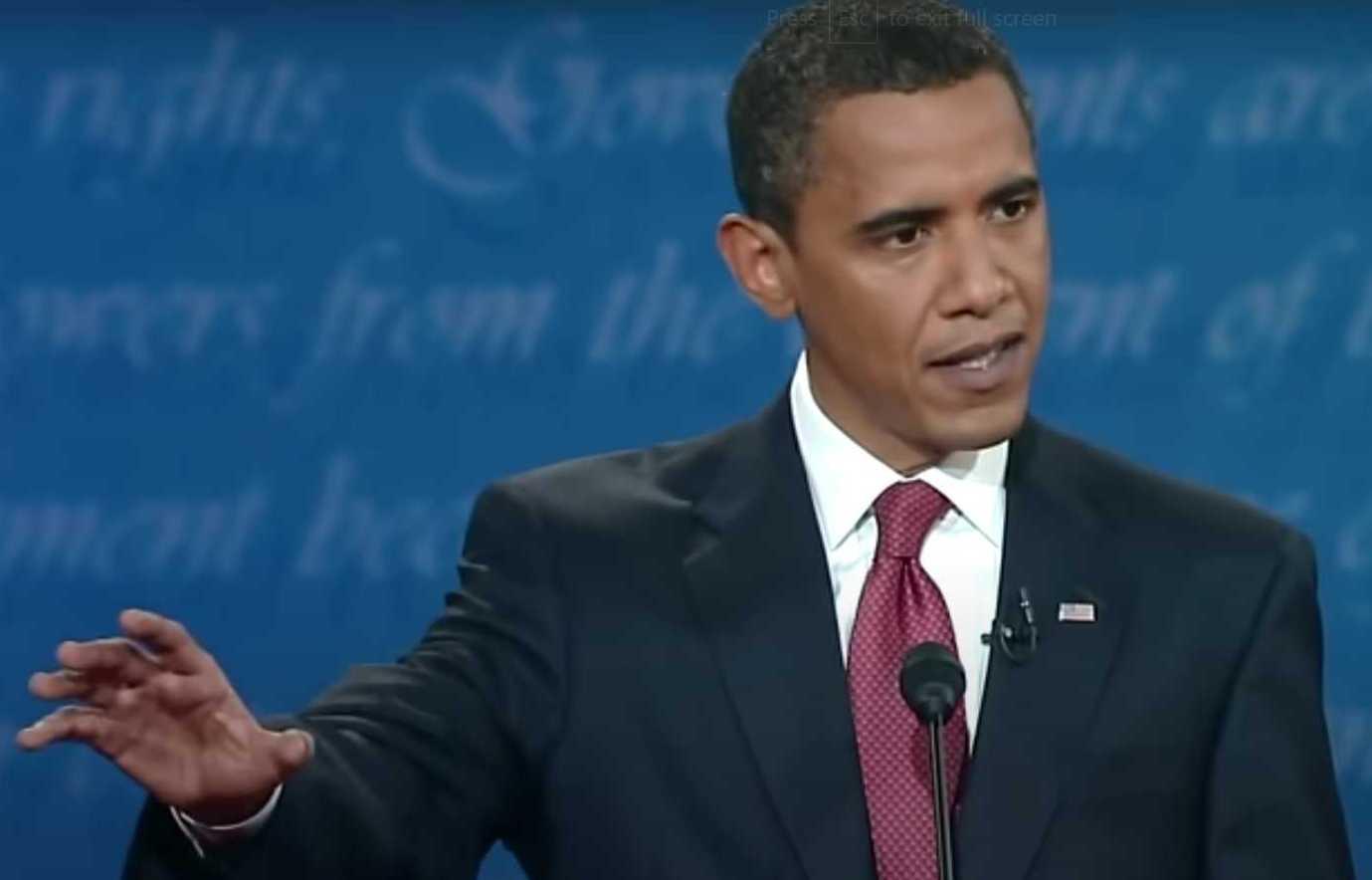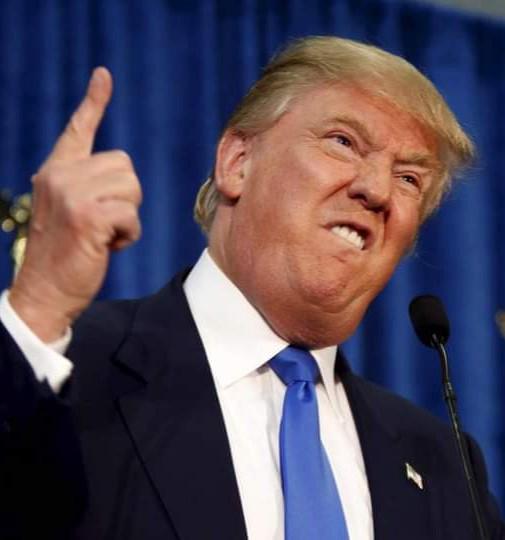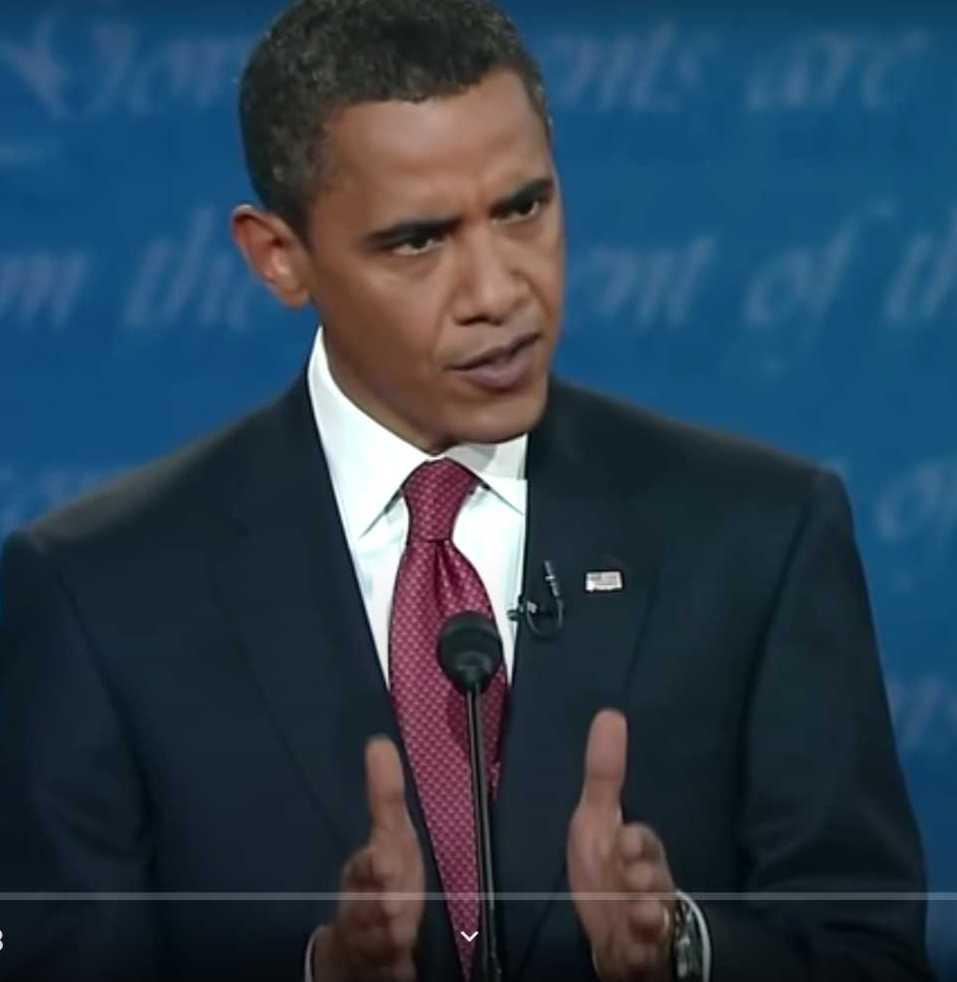Introduction
In leadership, the style of communication that an individual uses predetermines their influence and the ability to promote their agenda as a decision-maker. In turn, it is impacted by a variety of factors, including upbringing, life experience, education, and professional affiliation. Nonetheless, it is essential to determine which of the factors play a decisive role by comparing the communication styles of Barak Obama and Donald Trump, examining the examples of their debates and speeches across their presidential terms and election campaigns.
Communication might be of verbal and non-verbal nature; while verbal communication is explicit and deals with the choice of vocabulary that a speaker uses, non-verbal communication comprises communicative means beyond words. In this chapter, the two leaders’ verbal and non-verbal (including paralanguage and body language) communication styles will be compared. The goal of the comparison is to determine whether the style that a speaker uses is influenced more by education, upbringing, or career.
Paralanguage and Its Role in Leadership
Paralanguage is an important element of language due to its quality of transmitting implicit meanings and messages that support those delivered using words. Scholars refer to paralanguage as a part of linguistics that deals with “tone, cadence, pitch, and loudness – all of which have been schematized as part of linguistic models of paralanguage” (Spence, 2022, p. 118). Thus, paralanguage integrates the form and specific characteristics that accompany verbal communication; it entails vocal elements but are not words (Van Zant & Berger, 2020). According to Robertson (2020), “vocal pitch and variation along with fluency and constructive conveyance evoke responses of laughter, vocal relaxation, and proper understanding as prompts within paralanguage” (p. 52). Therefore, since this aspect of non-verbal communication particularly triggers a connection with the audience through induced emotional and cognitive responses, it is an essential part of public speaking.
Since leadership is disseminated through interaction with people using communication, verbal and non-verbal language plays a significant role in connecting with others. In this regard, paralanguage allows a leader to induce a necessary response in the audience by deliberate choice of paralinguistic elements (Pennycook, 1985). As stated by Robertson (2020), positive paralanguage is “correlated to trusting a leader” (p. 42). Intentional use of specific elements of paralanguage allows a leader to gain trust implicitly, which is essential for a leader’s opportunity to make a change and obtain the proper support of the followers. Moreover, within political leadership in general and the presidency in particular, trust and positive emotional reactions to a speaker are valid. Through tone and pitch selection, a speaker can retrieve attention and sympathy in the audience, which provides a solid basis for understanding, which is pivotal for effective and meaningful communication in the political leadership domain (Al-Zaman, 2020; Li, 2021). Thus, since paralanguage constitutes a fundamental communication, its leadership role is related to building a psychological connection with the followers.
Comparison of Obama’s and Trump’s Styles
In this section, communication styles portrayed in public speaking during debates and speeches by Barack Obama and Donald Trump will be compared. Two types of communication, namely verbal and non-verbal, will be examined to elicit similarities and differences. With the emphasis on the differences in style, the researcher will attempt to connect the manifestations of communication style particularities with the speaker’s experience and background factors. It will be determined whether leadership, as demonstrated through the communication style, is dependent on education, career, or upbringing.
Verbal Communication: Comparison
Similarities
Barak Obama and Donald Trump have a significantly different approaches to governance, which resembles the distinction in their worldviews. However, as speakers, they have several similarities derived from their communication styles in general and verbal communication in particular. According to Sloat (2019), “while Trump is generally lowest on analytic and highest in confidence, Obama is generally second-lowest in analytic and second highest in confidence” (para. 13). Thus, some critics denote that the level of analytical thinking and the demonstration of confidence in both these leaders is rather similar. Moreover, according to Harris (2019), the two presidents are similar in their employment of communication strategies characterized by branding, concentration on their personalities, and engaging audience.
In addition, both leaders posit themselves as strong decision-makers, which is explicitly shown in their verbal communication. According to the study conducted by Krebs and Ralston (2020), both Obama and Trump use similar tenacious and self-referential rhetoric. Indeed, “Obama’s rhetoric is 69 percent more self-referential than the presidential average, and Trump exceeds Obama by another 20 percent” (Krebs and Ralston, 2020, para. 10). Moreover, they both frequently use such words as must and need, demonstrating similarity in their tenacity.
Differences
However, there are multiple differences in the verbal communication styles employed by Obama and Trump. In particular, their strategies, although similar in direction, differ in the positioning of a leader. Indeed, Trump “projects the image of a political outsider” while Obama creates an image of an effective leader capable of making a change (Harris, 2019, p. 30).
Obama delivers his thought constructively and logically, which is persistently evident in his public speeches and debates, while Trump does not use factual information and refers to simple language (Chen & Shuo, 2018; Jimmy Kimmel Live, n. d.). Overall, when one compares the verbal communication styles of Obama and Trump, one might claim that the rhetoric of the former might be characterized as that of an orator, while one might not state that about the latter. According to (Cedrone, 2020), Obama constructs complex yet persuasive, linguistically appealing arguments that are delivered in a clear and sophisticated manner capable of averting crises and managing leadership responsibilities professionally and calmly. On the contrary, Donald Trump does not exude lexical and syntax sophistication to the same extent.
Trump frequently appeals not to constructivism but personal attacks on his opponents. His structures are simplistic, and words are basic and appealing to uneducated audiences rather than educated ones (Graydon, n. d.; Krebs & Ralston, 2020). The size of the vocabulary of Trump is smaller than Obama’s, which predetermines the variety of lexical units that the two speakers use (Krzywinski, n. d.) Although personal pronouns have been found a similarity in both leaders’ styles, Trump’s more frequent repetitions of the same structures for emphasis paired with the continuous use of personal pronouns such as ‘I,’ ‘me,’ ‘my,’ and others suggest his focus on his persona (CBS News, n. d.). Trump’s other specific stylistic feature is his frequent references to his opponents in an accusatory and emotionally charged manner expressed with accordingly selected lexical units (Bucy et al., 2020; Wang & Liu, 2018). In particular, in his debate with Hillary Clinton, he stated phrases like “your regulations are a disaster” and “you have not done that in thirty years” (CBS News, n. d. 00:19:59-00:20:03). Obama’s style is deprived of rude or bully-like language, which differs him from Trump.
Non-Verbal Communication: Comparison
Similarities
Despite the differences in the verbal communication identified between Obama and Trump, they have some similarities in the use of non-verbal communicative means. In particular, when one discusses their body language in debates and speeches, one might notice that they use similar gestures placing their hands together in a lock while sited in the same positions (See Image 1) (CNN, n. d.). During their meeting, both presidents mirrored each other’s postures and gestures, resting their arms on their knees, clasping their hands, and gesturing with palms when speaking (CBS Boston, n. d.; CNN, n. d., Goman, n. d.). However, there are other similarities in their body language that might be observed in their communication with other people in public debates or when giving speeches.

In particular, one of the common non-verbal features in Trump’s and Obama’s communication styles is the open palms gesture. Indeed, multiple researchers have emphasized that Trump often uses an open palm to demonstrate his connection with the audience. Although Trump’s frequent accounts of himself and his achievement suggest a high level of narcissism, an open palm gesture denotes his assimilation with others. According to Thanapornsangsuth (n. d.), “sometimes when he does that, he doesn’t contradict it – he compensates for it – by using these gestures to build a ‘we’ connection with the audience” (para. 8). As for Barack Obama, his open palms suggest honesty and openness with the audience. Images 2 and 3 demonstrate the similarity of this gesture in both Trump and Obama.


Differences
The differences in the non-verbal communication of the two leaders might be found in both body language and paralanguage. Indeed, Donald Trump’s gestures are well-known for constructing his unique style of conveying his assertive points of view. One of such trademark gestures is finger-pointing in an often aggressive manner, demonstrated in Image 4. According to Thanapornsangsuth (n. d.), this gesture and several others, such as the OK pitch and open palms, are signature elements of Trump’s body language, denoting his deliberate demonstration of confidence power influence congruent with his style of communication. Thus, the excessive use of finger-pointing is associated with attracting attention to the points claimed.

However, Trump often uses the pointing gesture in an accusatory manner, which resembles his bully-like style of interaction. Another significant element of Donald Trump’s non-verbal communication style is his demonstration of superiority or detest of the opponent, which is demonstrated in Image 5. In the presidential debate with Hillary Clinton, Donald Trump used accusatory discourse to combat his opponent’s arguments, which was emphasized by his superior looks at Clinton while she spoke (CBS News, n. d.). In such a manner, Trump’s body language is assertive and egocentric with the elements of superiority and confidence (Cullen, 2016). As for paralanguage, no significant similarities might be detected in the communication styles of the two leaders. Their differences in the paralanguage domain will be discussed in the next subsection of the chapter.

On the other hand, there are some particularities of Barack Obama’s use of non-verbal communication distinctive from Trump’s. In particular, one of the characteristic features of Obama’s body language is his controlled hand gestures that he seems to use for overshadowing his messages deliberately. Indeed, he often uses his palms in parallel to emphasize the logic and structure of his argument, as it is shown in Image 6, demonstrating Barack Obama’s speech in the debate with Senator McCane within the framework of the presidential debate of 2008 (PBS NewsHour, n. d.). In addition, Obama is more likely to nod his head to connect with the audience (The Embodiment Channel, n. d.; Morgan, 2009). As for Trump, he shakes his head to express disagreement or emphasize the uniqueness of his arguments at CBS Boston. (n. d.). These differences convey the distinction in the leaders’ form of message delivery and emphasis on their attitudes toward either interlocutors or the subject under discussion.

Similarly, differences might be detected in the use of paralanguage by Donald Trump and Barack Obama. When examining paralinguistic particularities, one identifies non-verbal vocal communication that is a manifestation of power within the context of political public speaking. In particular, “less dominant interactants will tend to show more variability in the fundamental frequency range during social interaction; and conversely, more dominant interactants will tend to show less variability in the fundamental frequency range during social interaction” (Kalkhoff & Gregory, 2009). When applying these considerations to the paralanguage of the two leaders, one might note that they are assertive in maintaining their limited variability in the frequency range, suggesting their high level of power. However, when analyzing the pitch, one might find a distinctive characteristic that differs between the two speakers. Trump often raises his voice to deliver his point, while Obama uses more assertive language without changing the pitch.
Limitations
The findings presented in this chapter result from the researcher’s effort to collect data and analyze the narratives and visual representation of the communication styles of the two political leaders. Due to the qualitative inquiry utilized for the research, the subjectivity of analysis and its implications might be present. However, using multiple sources of information, including primary sources and studies, the overall findings are credible and reliable and allow for answering the research question.
Conclusion: The Connection between Speech Style and Upbringing or Career
The identified differences in the communication styles used by Barack Obama and Donald Trump, whose education is similar but upbringing and careers are different, demonstrate that the way one communicates as a leader is not a result of mere education. This finding is congruent with the claims of experts who hold that great leaders are the ones who obtained certain skills from their parents in childhood (Haden, 2017). Indeed, “being persuasive doesn’t mean you have to manipulate or pressure other people,” it rather means having an ability to “effectively describe the benefits and logic of an idea to gain agreement” (Haden, 2017, para. 3). The comparative analysis of the communication styles of Obama and Trump has shown that despite differences in conveying their messages, both politicians communicate effectively and are powerful and successful leaders. In governance and presidency, the type of individual qualities a person develops demonstrate the overall values and ideas of the state through temperament, leadership style, and identity (Gourevitch, 2011; Morgante, 2021; Renshon, 2008). Thus, leadership quality depends on the personality characteristics shaped by upbringing and life experience.
References
Al-Zaman, M. (2020). Digital media and political communication in Bangladesh: A new wave of democratic and pluralistic politics?. Artha-Journal of Social Sciences, 19(2), 1-19
Bucy, E. P., Foley, J. M., Lukito, J., Doroshenko, L., Shah, D. V., Pevehouse, J. C., & Wells, C. (2020). Performing populism: Trump’s transgressive debate style and the dynamics of Twitter response. New Media & Society, 22(4), 634-658.
CBS Boston. (n. d.). Body language expert analyzes Trump-Obama meeting [Video]. YouTube. Web.
CBS News. (n. d.). Full video: Trump-Clinton first presidential debate [Video]. YouTube. Web.
Cedrone, M. J. (2020). Cicero and Barack Obama: How to unite the republic without losing your head. Nevada Law Journal, 20(3), 1177-1208.
Chen, D., & Shuo, Z. (2018). Analysis of interpersonal function in speech—a case study in Obama’s WHCD address. International Journal of Liberal Arts and Social Science, 6(8), 31-40.
CNN. (n. d.). The body language behind the Obama-Trump meeting [Video]. YouTube. Web.
Cullen, C. (2016). What does Donald Trump’s body language say about him?. EuroNews. Web.
The Embodiment Channel. (n. d.) Body language of Obama [Video]. YouTube. Web.
Goman, C. K. (n. d.). Body language at the Trump and Obama meeting. Commpro. Web.
Gourevitch, P. (2011). The Obama posture.The New Yorker. Web.
Graydon, S. (n. d.). Trump’s terrifying communication effectiveness. Web.
Haden, J. (2017). Science says kids who become great leaders have parents who teach them 8 things. Inc. Web.
Harris, C. (2019). Missing the mark: Obama and Trump’s use of similar communication strategies. Political Science, 32. Web.
Jimmy Kimmel Live. (n. d.). Mash-up: Trump’s al-Baghdadi speech & Obama’s Bin Laden speech [Video]. YouTube. Web.
Kalkhoff, W., & Gregory, S. W. (2008). Beyond the issues: Nonverbal vocal communication, power rituals, and “rope-a-dopes” in the 2008 presidential debates. Current Research in Social Psychology, 14(3), 39-51
Krebs, R. R., & Ralston, R. (2020). Trump and Obama have one surprising thing in common – the words they use. The Conversation. Web.
Krzywinski, M. (n. d.). Lexical analysis of 2008 US presidential and vice-presidential debates — who’s the windbag?. Web.
Li, X. (2021). Research on the style characteristics of network hosts: Taking Wang Nima’s style characteristics as an example. Frontiers in Business, Economics and Management, 2(3), 129-132.
Morgan, N. (2009). Did Obama’s body language match his rhetoric?Harvard Business Review. Web.
Morgante, V. (2021). Make America hate again: a quantitative analysis on the effects of presidential rhetoric during the Obama and Trump administration [Doctoral dissertation]. Rutgers University-Camden Graduate School.
PBS NewsHour. (n. d.). McCain vs. Obama: The first 2008 presidential debate [Video]. YouTube. Web.
Pennycook, A. (1985). Actions speak louder than words: Paralanguage, communication, and education. Tesol Quarterly, 19(2), 259-282.
Renshon, S. A. (2008). Psychological reflections on Barack Obama and John McCain: Assessing the contours of a new presidential administration. Political Science Quarterly, 123(3), 391-433.
Robertson, T. A. (2020). Team creation methods in practice: Understanding the potential effects of nonverbal communication in the leadership of team formation [Doctoral dissertation]. Western Kentucky University.
Sloat, S. (2019). Psychologists determine how “Obama is the president most similar to Trump.” Web.
Spence, R. (2022). “A sigh of sympathy”: Thomas Hardy’s paralinguistic aesthetics and evolutionary sympathy. Victorian Literature and Culture, 50(1), 117-139.
Thanapornsangsuth, S. (n. d.). Understanding Trump’s non-verbal communication. Web.
Van Zant, A. B., & Berger, J. (2020). How the voice persuades. Journal of Personality and Social Psychology 118(4), 661–682.
Wang, Y., & Liu, H. (2018). Is Trump always rambling like a fourth-grade student? An analysis of stylistic features of Donald Trump’s political discourse during the 2016 election. Discourse & Society, 29(3), 299-323.